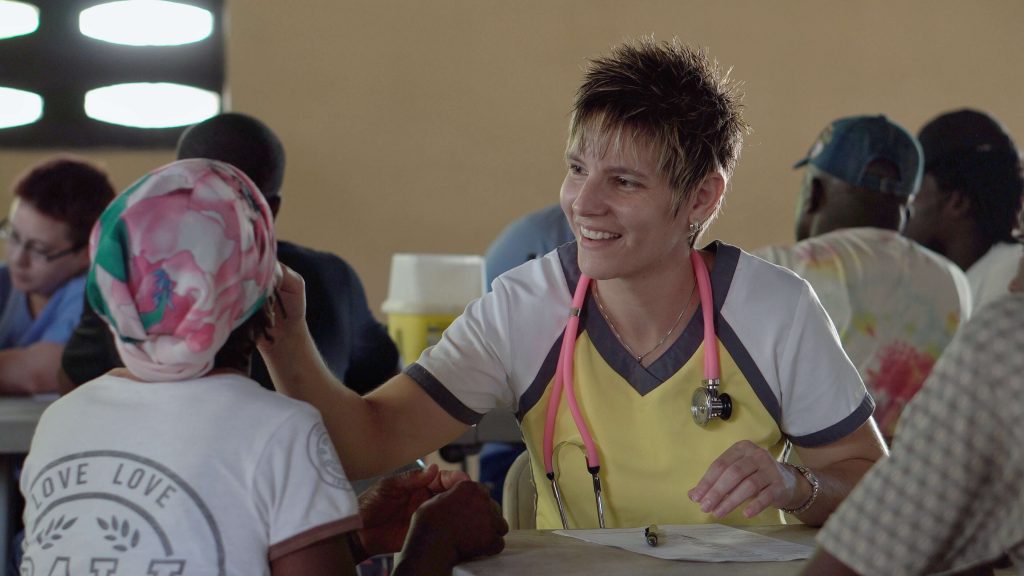On the most basic level, confianza means trust in English.
Contributing factors to establishing confianza with another person can vary depending on the situation and the environment of the interaction, but for the healthcare context it is a conscious judgment that someone makes about another person that includes perceptions like:
- this person is approachable
- this person is respectful to me
- this person knows what they’re talking about and how it relates to me
- this person cares about me and my well being
Countless studies show that Latino patients who have confianza in their care team (or individual provider) tend to adhere to treatment more closely and experience better health outcomes. It’s not surprising, since the list above is filled with positive emotions, it would motivate most people to listen and follow instructions.
On one level, establishing confianza with your Spanish speaking patients is akin to building a positive rapport. While it’s similar, the fact that you’re working across obvious and subtle cultural divides makes it a little trickier, and can leave you wondering whether or not you’re doing a good job relating to your patient. So here are some tips to boost confianza with your patients.
5 easy ways to build confianza with your Spanish-speaking patients:
- Speak Spanish. Speaking Spanish, or at least attempting to speak Spanish, is key to building confianza with your patients. It doesn’t matter how well you speak (you will want to continually try to improve of course), the simple fact that you – an authority figure in a position of power – care enough to speak the language of the underserved here in the USA makes an impression. It communicates that you’re willing to go out of your way to meet your patient where she is at and do what you can to connect with her in her language. As a side note, it also gives you significant “cool points” in my eyes…the fact that you would dedicate time and energy to benefit someone else earns my respect!
- Touch your patient apart from the physical exam. A respectful touch on the shoulder, back or forearm of your patient communicates warmth and caring. Start by shaking hands, but additionally consider a timely touch. These are most “normal” when you transition in the flow of your consult, as you respond empathetically, or upon leaving the room for a moment. A special note about touch: if you comment how cute someone’s baby or child is “ay que lindo/a” – be sure to touch the baby or child on the head or shoulder as well.
- Use appropriate titles. It’s a simple linguistic technique but it goes a long way. If you can greet and address your patients with the proper title, you’ll be acting in a way that your patient perceives as appropriate for the setting, and you’ll build trust between the two of you. A few titles you want to use on a regular basis are:
- señor or señora with the patient’s last name (for any adult men or women)
- don or doña with the patient’s first name (for any adult 50+ that you’ve grown close-ish to)
- señorita with last name (for a younger lady who is unmarried and has no children)
- Use professional tone. One of the most common unintentional ways of disrespecting your adult patient is not using professional tone. An easy way to set professional tone and demonstrate respect for your adult patient is to always use the usted form of you. This form of you shows up embedded in verbs and pronouns. Here are some examples of linguistic adjustments you may want to make:
- Change ¿Cómo estás? > ¿Cómo está? (tú form of verb changing to usted form)
- Change Necesito examinarte > Necesito examinarlo (direct object pronoun)
- Change ¿Te gusta…? > ¿Le gusta…? (indirect object pronoun)
- Change Toma 2 pastillas… > Tome 2 pastillas… (usted commands instead of tú commands)
- Show genuine interest. If you can ask a question or two that show genuine interest in the patient and his/her family, you’ll communicate that you know how to small talk in Spanish. This is normal to the Spanish speaker. When it happens, they feel like they’re talking to someone who understands them and the norms for how people communicate in their language. If it’s missing, it will be noticed and will feel foreign. It’s easy to show interest, here are a few ideas: Ask about their family ¿Tiene hijos?, ¿Cómo está la familia?, ¿Cuántos años tiene ___?, Comment on something you like about them at the moment (clothes, hair, shoes, etc.) ¡Me gusta(n) ___!
- Slow down. Have you ever been brushed off and hustled through an interaction? I just recently had a customer support experience with two different customer service techs at Google. The first said she couldn’t help and told me to search the online forums for an answer to my question. The second told me he couldn’t help, but he showed me how to find the answer in the forum and even showed me how to submit a new topic if the answers listed weren’t helpful. The 2nd guy took maybe 2 extra minutes with me… but I left that conversation satisfied! This is no secret in medicine either, everyone knows that patient satisfaction correlates with the amount of time you can give your patient. This is one of the most frequent comments we hear during our completely unscientific anecdotal research (via host family interviews) on our Medical Spanish immersion programs. Almost everyone mentions contact time when we ask them about the qualities in a healthcare professional that make them a “good” provider. At the end of the day, people want to be heard and get the sense that they matter to the care team.
While you would be silly to think that a formulaic approach to a relationship is a good idea, the suggestions above are effective ways to build your patients’ confianza in you and the care team you work with.
If you need help improving your Medical Spanish – let Common Ground help! We’ve been helping healthcare workers improve communication with their Spanish-only patients since 2001!
- Face to Face Medical Spanish Classes in Colorado
- Online Medical Spanish Classes
- Medical Spanish Immersion trips & International Rotations in Central America
Comment below if you have some other tips for building confianza with your patients!
Btw: If you’re working on learning Spanish for your healthcare career, we have the medical Spanish you need!
Keep up the good work speaking responsible Spanish to your patients! Check out our other books, classes & products to help you !
*If the link isn’t working for you, you may need to unblock pop-ups in your browser settings




